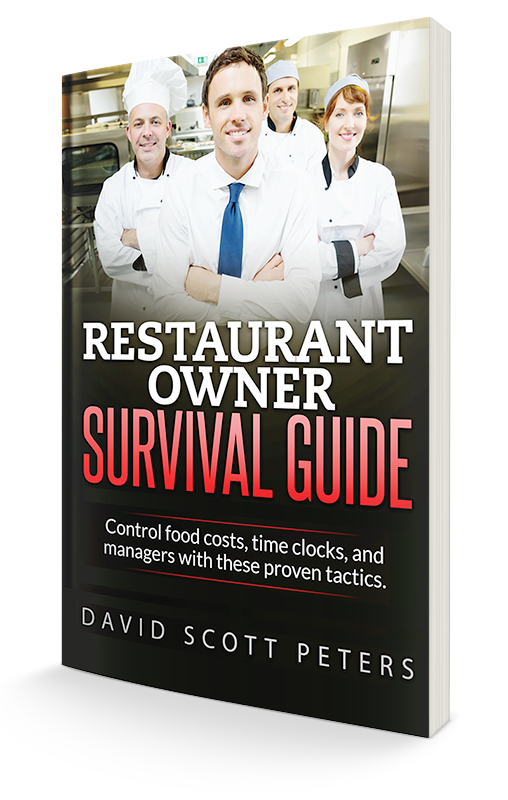10 Tips for Small Bar Owners
Small bar owners, especially small bars that are part of a restaurant, can have a great profit margin. It’s not an understatement when I say that the liquor sitting on your shelves and in your coolers is the equivalent to blocks of gold bullion. The problem is that all too often our management teams and employees simply look at it like water — plentiful and cheap.
Serving alcohol should be an extremely profitable endeavor, especially for small bar owners and restaurants with bars. With average pour costs running as low as 16 percent for liquor, 21 percent for draft beer, 25 percent for bottle beer and 28 percent for wine. Of course these numbers can be higher depending on your operation, pricing structure and sales mix. But compare this to food costs running in a range of 28 – 45 percent, and you can quickly see why alcohol sales can really make you money.
With all of this in mind, small bar owners (and restaurant with small bars) MUST have these 10 systems in place to prevent everyone else from robbing you of your profits.
1) Visually Check Orders: When your liquor distributor arrives at your back door to deliver the liquor order you placed a day or two before, it’s extremely important that you visually inspect that everything that is on the invoice is in the boxes.
2) Stock by the Six Pack: Many restaurant and bars that sell food often struggle with cooler space and have to keep their beer and food in the same cooler. This creates a situation where controlling everything in and out of the walk-in is almost impossible. The best way to defend against this loss is to stock bottle beer by the six pack only.
3) Pour Draft Beer Correctly: The proper way to pour a draft beer requires you bring the glass to the tap before you open it. At a rate of approximately 2 ounces per second coming out, for every draft beer successfully poured, you waste one. Forget about the expense, think about the lost revenue! With 10 percent acceptable loss built in, you’re talking about pouring approximately 21 full beers down the drain for every keg you tap. At an average of $4 per pint glass, it’s the equivalent of you opening up your wallet and throwing away $84 each time you tap a new keg.
4) Track Waste: On a daily basis keep track of what was spilled, broken, mistakenly ordered and by whom. Next to each line entry keep track of the value in product cost and what you lost in potential register ring. This will allow you to spot areas for training and teach your staff that those little mistakes add up to a lot of lost money, which is the best way to show them why it’s important that they get things right the first time.
5) Keep Your Bar Clean and Neat: It’s important to keep your bar area clean for health code reasons and so that your guests aren’t looking at your bartender’s mess (which in a busy shift can look like they are wading through a garbage dump). Another important reason to keep it clean is bartender theft. I’ve offered examples of bartender scams in the past, but a cluttered bar with toothpicks, rubber bands, cherry stems, etc., is one reason to be suspicious.
6) Use a Jigger: A jigger pour can be an exact way to portion drinks and a great tool for spotting theft. It can slow things down in a busy bar, but weigh the benefits with this one.
7) Never Give Your Keys Away: The liquor closet has a lock on it for a reason: to keep your product safe. You need to have a policy in place, no matter how busy your place is, that ONLY managers have access to the liquor closet to get the bar replacement bottles during operation
8) Standard Drink Recipes: There has got to be at least seven different ways to make a Mai Tai. Each one of them containing different liquors and amounts of liquor. This goes for most mixed drinks. Use drink recipes to make a consistent product and to control your costs.
9) Buy the Right Glassware: Quality and size are important. It is often cheaper to pay more for and purchase higher-end tempered glassware than it is to buy the cheap stuff that breaks easily and needs to be replaced almost weekly. When considering size, a glass too large begs a bartender to fill it — at your cost.
10) Bartender Training: The most important thing any small bar owners can do to control their pour costs and ultimately increase their profits is to train, train, train. You must train, no matter how long your bartenders have been bartending or how good they say they are.
You can quickly see no matter what size your operation, implementing these 10 easy ways to control your liquor pour cost can and will have a huge impact on your bottom line. So go down the list, choose what you can implement right away. Then create a schedule of when the others will be put into place and before you know it, you will see the results in your bank account.
To learn more about maximizing your restaurant or bar’s pour cost, and how small bar owners can maximize profits and prevent theft, read our free special report, Breaking Away from the Insanity: How to easily take control of your restaurant and make more money. Download it here.



